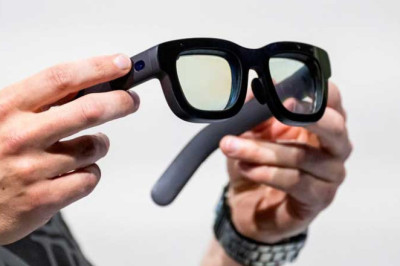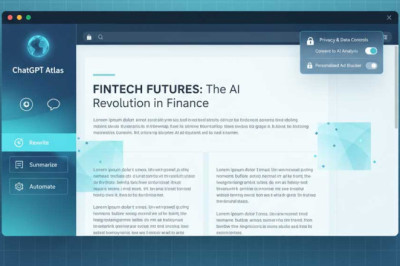How to Expand Your Market and Reach More Customers for Your Ecommerce Business Through Accessibility

views
How to Expand Your Market and Reach More Customers for Your Ecommerce Business Through Accessibility
Key Takeaways
- Plan for accessibility from the beginning
- Look to SEO for the basics
- Use automated tools to streamline testing
- Get expert input or training in accessibility
Opinions expressed by Entrepreneur contributors are their own.
Research from Forrester shows that executive-level support is on the rise for accessibility. Companies are thinking beyond legal compliance and looking at the disability community as a new market. Software teams are including accessibility experts and testing their sites for issues.
How can your accessibility plan address more than just the basics to capture this market of 1.85 billion people worldwide?
Planning for accessibility at the beginning of a project leads to a better user experience. It avoids the often ill-fitting solution of adding accessibility as a quick fix before launch. Designers can build accessibility into their web pages when creating resources that will be shared across their design and development teams, like a design system. Popular tools like Figma have plugins to help design with accessibility before developers start to code.
Microsoft's accessibility team adds bluelines to their webpage specifications. Bluelines highlight the keyboard navigation workflow, screen reader content and the hierarchy of headings, which are critical for the visually impaired. Another resource is the Microsoft Inclusive Design Toolkit. The toolkit initially focused on sensory and physical disabilities but has been updated to include diversity in cognition.
Related: Inclusion and Accessibility in the Digital Space
96.1% of errors based on Web Content Accessibility Guidelines (WCAG) fall into six categories. Using basic SEO practices can avoid the majority of these issues:
Low contrast text
Missing alt-text for images
Empty links
Missing form input labels
Empty buttons
Missing document language
Good SEO also includes adding transcripts and captions to videos, avoiding mouse-dependent actions and giving users multiple ways to find content. Part of the overlap between accessibility and SEO is because search engines and assistive technology, such as screen readers, are designed to be readable by machines. Both use the keyboard to navigate and parse content through semantics.
Google Chrome offers a developer tool called Lighthouse to audit a website's performance, SEO and accessibility. More in-depth tools include WebAIM's WAVE, Deque's Axe and ANDI (Accessible Name & Description Inspector). These tools can quickly highlight accessibility issues and suggest fixes to ensure all your users are able to purchase products or services from your website. You can also check for ADA (Americans with Disabilities Act) and WCAG compliance with an accessibility checker or follow a checklist.
You may be able to work with your web design and development agency if they offer accessibility compliance services. If not, consider hiring an outside consulting firm or training someone on your team to help with planning, remediation and testing. Companies like Deque offer courses in accessibility training for web professionals. It is not enough to pass WCAG compliance. Websites should be tested by users with a range of disabilities. Fable allows you to hire users with disabilities for product interviews and to test websites and apps with your choice of native assistive technologies like screen readers, magnifiers and voice recognition.
A study analyzing 50 high-performing ecommerce sites found that 55% of the websites met WCAG Level AA criteria. Top companies in the Fortune 500 score high on accessibility. The Return on Disability group makes a case not only for legal compliance but also coaches their clients on how to gain returns from investing in the huge market of users with disabilities.
After working with a consultant to redesign their mobile grocery app, Tesco saw an increase in average order value, and positive reviews increased by 1,000%. Visually impaired users who rely on iPhone's VoiceOver technology were especially impressed with the app.
Related: How Website Accessibility Affects Your Brand's Reputation and Success
A report on the state of online shopping for people with disabilities listed some of the most common accessibility requests:
Easy returns
Clear way to contact customer support
Detailed product descriptions
Interviews with screen reader users show that they rely heavily on being able to read through headings and links to get an overall idea of a webpage. Having the search area near the top of the page or providing skip links for the search and the main content is a plus. Visually impaired users will need an audio alternative for CAPTCHA forms. Users relying on screen magnification tools want to find large, clearly labeled buttons. Product photos should have a high contrast between the product and the background. Less overall visual clutter helps users with low vision differentiate between page sections.
Nucleus Research found that the 2% of ecommerce transactions completed by blind users translates to a total available market of about $10.3 billion. Estimates of the market share are around $490 billion for working-age adults with a disability in the United States.
Companies that change their accessibility policies from reactive to proactive are reaping the benefit of increased sales in a previously untapped market. With a plan to include accessibility from the beginning, you can go beyond compliance to deliver an accessible ecommerce experience that will delight all your users.




















Comments
0 comment